Philips 50PUS8545 Review
Is the Philips 50PUS8545 ‘The One’ to get?
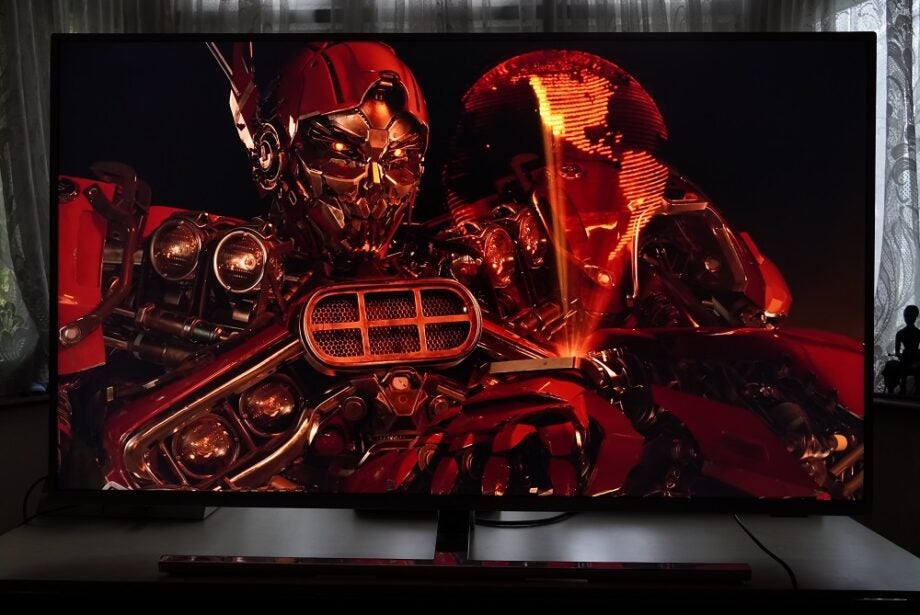

Verdict
The Philips’ 50PUS8545 is a mid-range 4K TV with an impressive spec sheet on paper. It can present colourful images, although its out-of-the-box settings require adjustment. Ambilight is a treat, but its HDR10+ performance is peculiar, and the native Disney+ and Prime Video apps don’t support HDR.
Pros
- Bright, colourful picture
- Multi-HDR support
- Ambilight
- Surprisingly decent Vivid mode
- Solid motion processing
Cons
- Aggressive HDR10+ performance
- No HDR for Disney+/Prime Video app
- Out-of-box settings need adjustment
Key Features
- AmbilightThree-sided Ambilight bias lighting system
- HDR supportHDR10, HDR10+, HLG and Dolby Vision
- Audio formatsDolby Atmos processing and DTS Play-Fi connectivity
- InterfaceAndroid TV operating system
Introduction
The Philips 50PUS8545 is the mid-range set in the company’s 2020 4K TV lineup, offering premium specs at affordable prices.
The last time we looked at a Philips TV that wasn’t one of its OLEDs was back in 2018. The 50PUS8545 sits in the brand’s Performance Series, the tagline being “The One” to watch. Its specs make a good case for themselves: Dolby Vision and Atmos, HDR10+, voice support, Philips’ P5 Picture Engine and its ace in the hole, Ambilight.
Availability
- UKRRP: £549
- EuropeRRP: €779
Philips’ The One’ is priced at £549 / €749. Philips does not sell this TV in the US, Canada or Australia.
Design
- Premium looks
- Thick, silver bezel looks… odd
- Good remote
The Philips PUS8545 comes in five sizes: 43, 50, 58, 65 and 70 inches, with the 70-inch version coming with feet instead of a stand. If you include the stand, the TV measures at 720.2 x 1119.8 x 253.6mm (HWD).
Compared to cheaper TVs, the Philips offers more pizzazz and style with its elegant chrome stand and bezel. However, the bezel is noticeably thick, and the choice of silver means you can’t help but notice it, especially during the day.
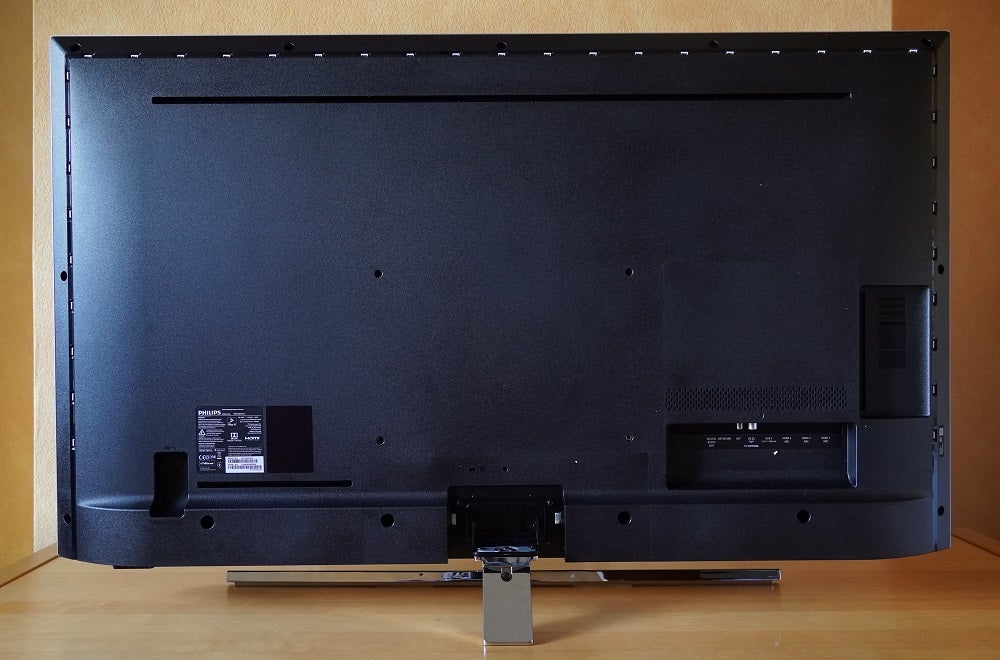
The stand can swivel 15 degrees in either direction to help with placement, plus there’s a little area around the back for cable clutter. Construction is on the complicated side, since the stand comes in multiple parts and takes a while to assemble.
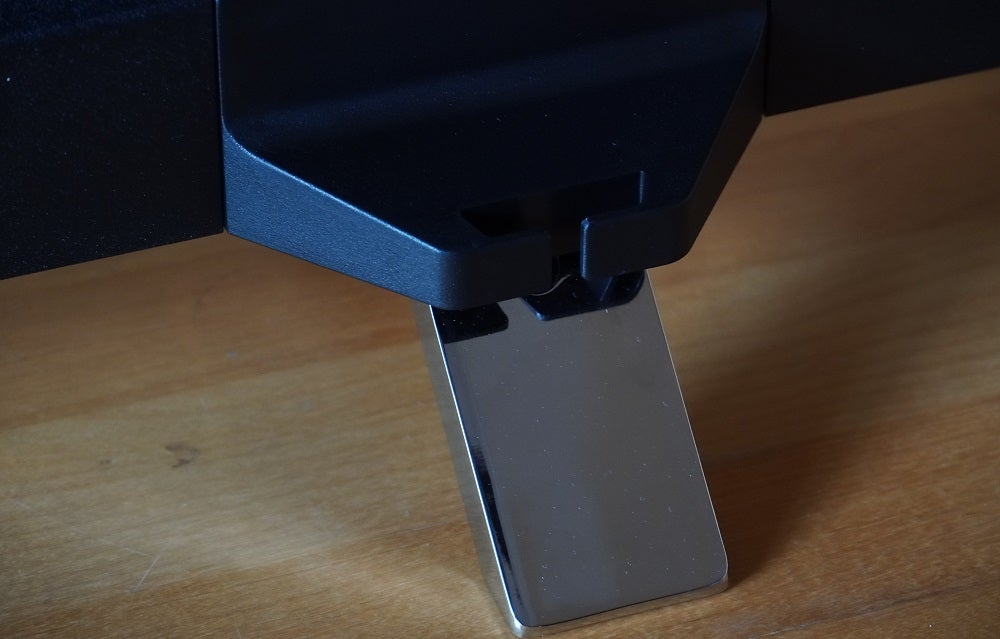
The remote exudes a premium feel with its brushed finish and unorthodox rectangular shape. Button presses feel precise and clicky, and there are hot keys for Netflix, Freeview Play, Ambilight, Rakuten TV and Google Assistant. As a means of controlling the TV, it feels good and is fairly responsive to inputs.
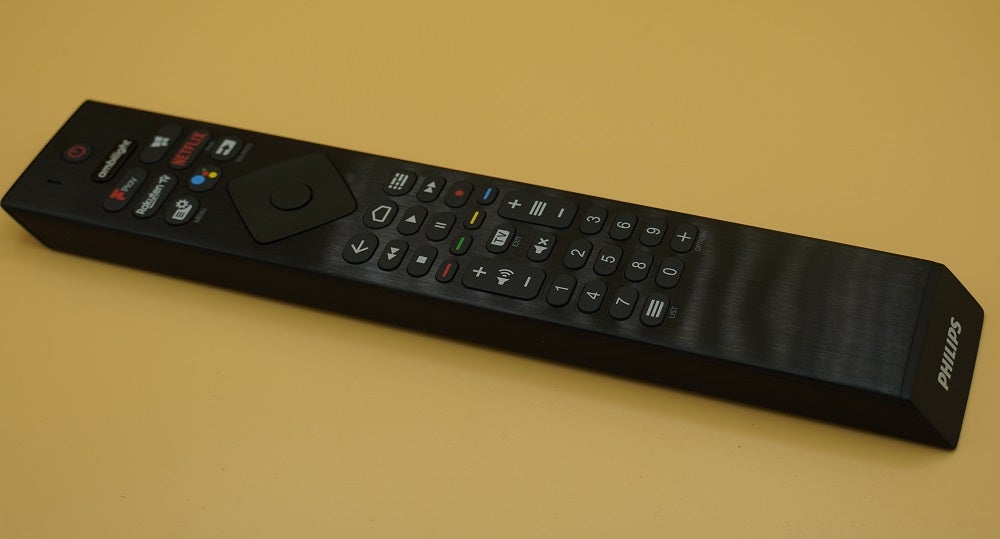
Features
- All HDMI inputs support ARC
- Android TV brings lots of smarts
- Dense menu settings
The 50PUS8545 has side- and down-facing connections that consist of four HDMI and two USB inputs: satellite and terrestrial tuners, Ethernet, headphone out, Common Interface Plus and digital optical out. All four HDMI inputs support ARC, so you can plug an external sound system into any one, but that also means there’s no eARC support here.
Wireless connections include Wi-Fi (802.11ac) and Bluetooth 4.2. There have been moments where Wi-Fi randomly disconnects, which I initially thought was due to my Wi-Fi, but it’s an issue that’s been mentioned elsewhere.
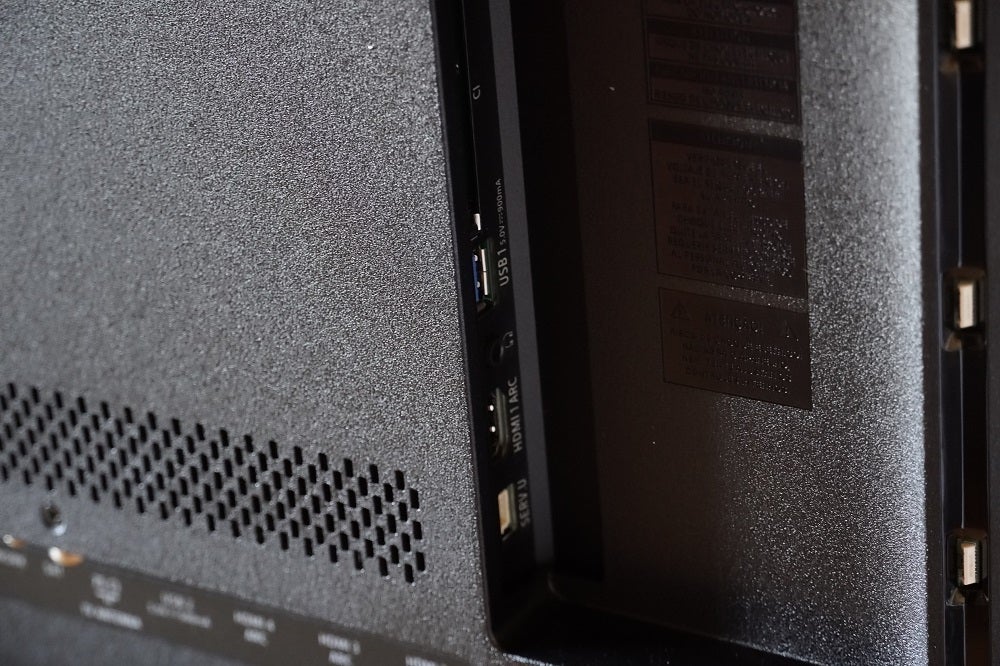
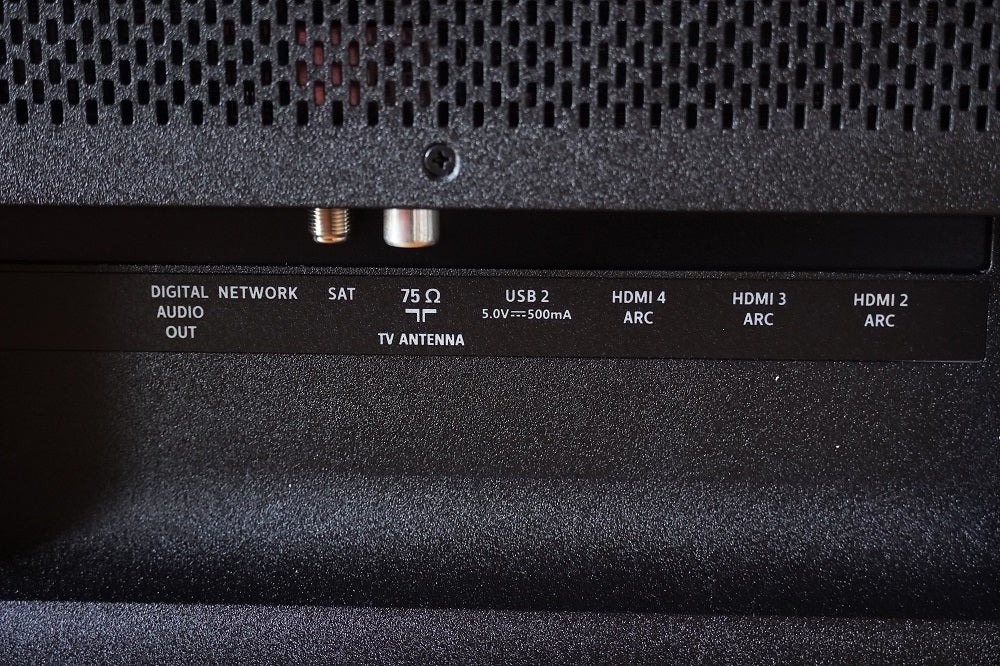
The UI is Android TV 9 and with that you get Google Play Movies/Play Music, built-in Chromecast and Google Assistant voice control. You also get plenty of apps: YouTube, Prime Video, Rakuten TV, Netflix and Disney Plus to name a few. Philips’ Disney+ app only supports HD/5.1. Plug in a streaming stick and it plays Dolby Vision/Atmos on Disney+ just fine. Even more curious is the Prime Video app supports 4K but not HDR. Something has gone amiss there.
I don’t find Android TV to be the bugbear others do; to me it’s neatly laid out with decent content discovery and curation. Integration with Freeview Play means all the UK catch-up apps are present and correct, and that (smart) decision makes this version more streamlined than its Android equivalent on Sony TVs.
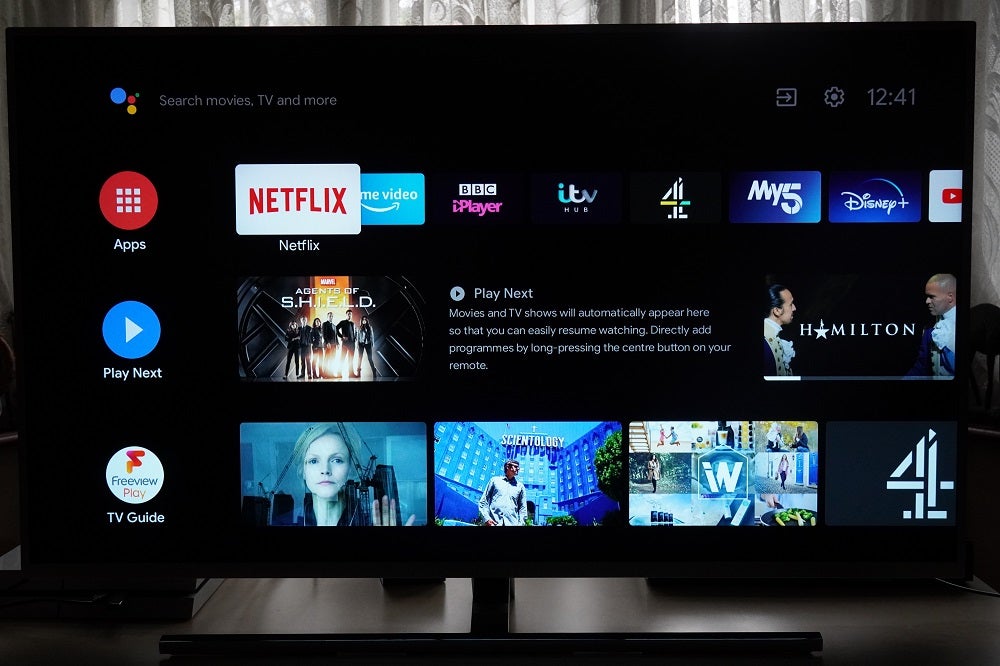
Philips own menu settings offer an array of advanced settings for picture, sound, Ambilight and more. That’s both welcome and potentially much for someone only after simple tweaks. A positive is that each setting is provided with an explanation, and if you still find yourself overwhelmed, there’s a Quick picture setting for simpler adjustments. Annoyingly, when using iPlayer, settings can’t be adjusted until the app is closed.
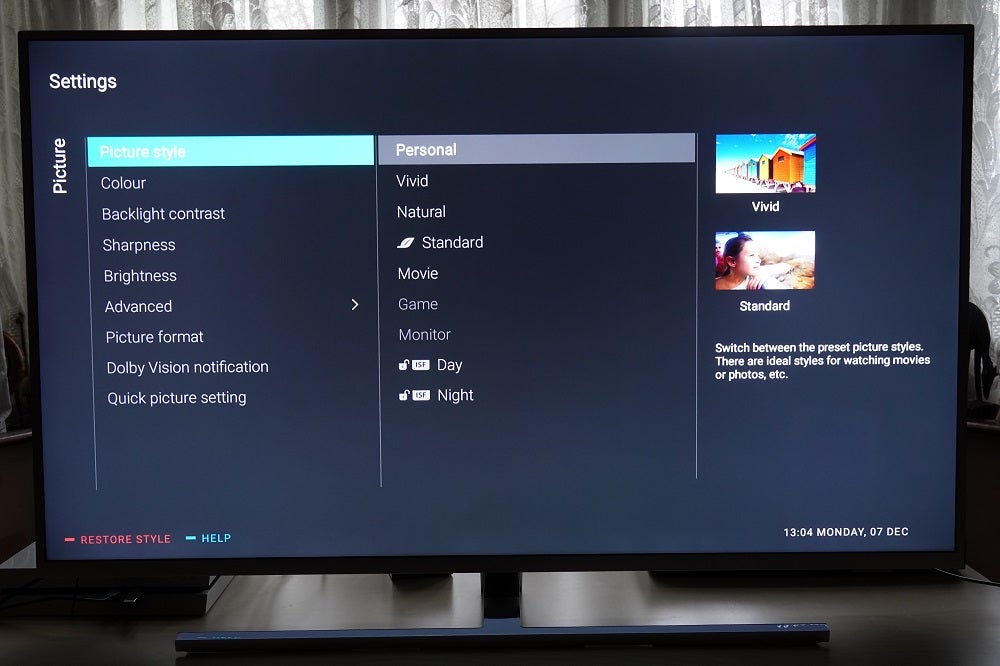
There is a Game mode that needs to be set for whichever HDMI input you use, since the TV doesn’t auto-detect when a console is connected. Latency is good – better than Philips’ own OLEDs at 21.2ms.
Picture quality
- Needs plenty of adjustment
- Colourful, saturated picture quality
- Enjoyably slick HDR performance
I’m not overly enamoured by the Philips’ out of box settings. I’m struck by how saturated the colours look, and watching Fulham vs Everton on the BBC, the away team’s kit veers more towards orange than amber.
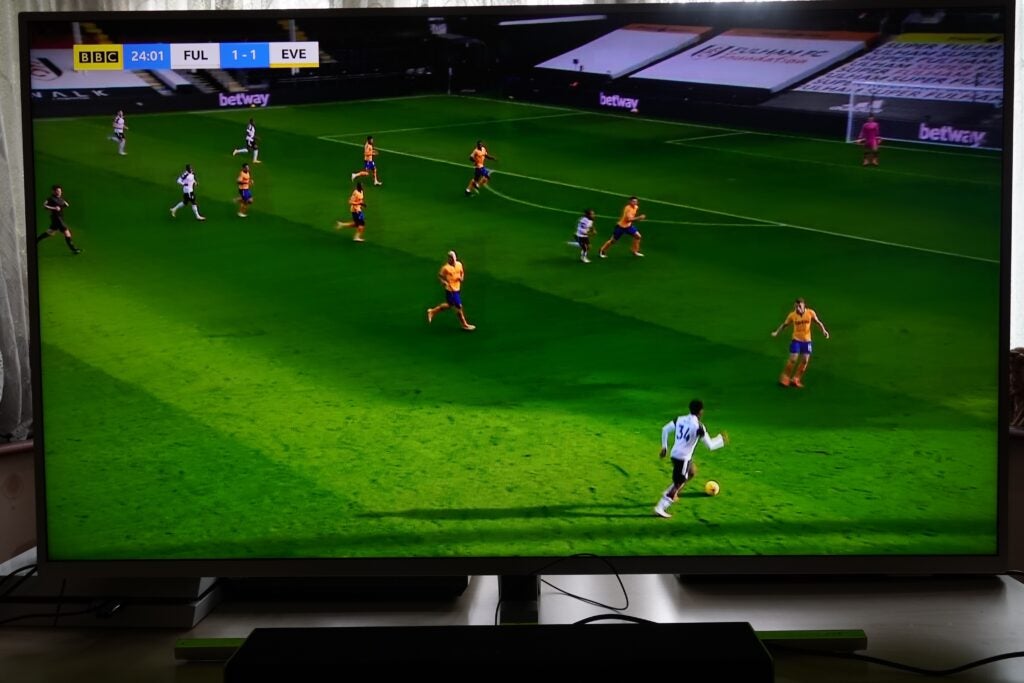
My advice? For SDR content try Personal mode over Standard. Standard is effectively Eco mode, and the Natural mode makes greens look artificial. Switch colour temperature to Normal, Dynamic Contrast to Medium and the Colour Gamut to Normal (not Wide) as a starting point. For a brighter image, turn the Light Sensor setting to Off. Philips’ out-of-box calibration leaves room for improvement, but I suspect the 50PUS8545 is more interested in punchy, attractive colours over accuracy.
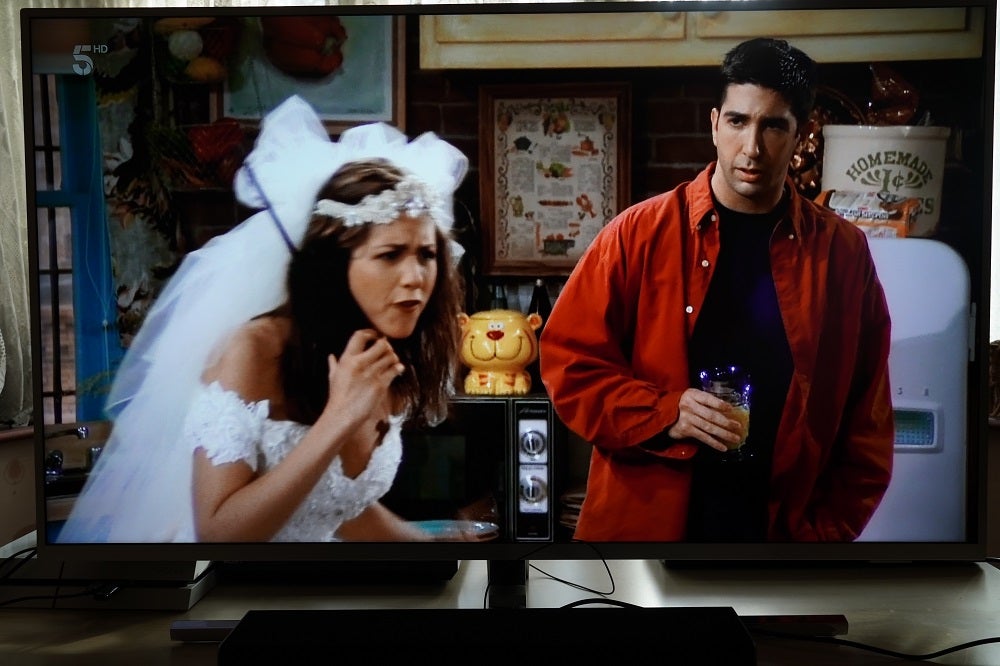
Once adjustments are done, the Philips 50PUS8545 puts in a colourful performance with upscaled broadcasts. Colours are characterised by their saturation, and in brightness terms the Phillips has a higher ceiling than the similarly priced Panasonic TX-50HX600. Whites radiate brightness but can lack detail. There’s also an element of noise to some upscaled HD content, as well as noticeable edge definition with sports. Overall, though, images have a clear, fairly well detailed and colourful look.

Upscaled standard definition images are as you’d expect: fuzzy, noisy and soft, with some iffy edge definition around objects and people. The bright, saturated colours I mentioned about the HD performance translates well enough to SD, but stick to HD content.
Motion is solid and maintains a natural appearance for the most part. There’s slight judder with movement – particularly hands – but whether it’s HD or Dolby Vision HDR content, the 50PUS8545 is slick rather than overly smooth. It doesn’t find itself in a halfway house between solid and jerky motion, like the Panasonic does.
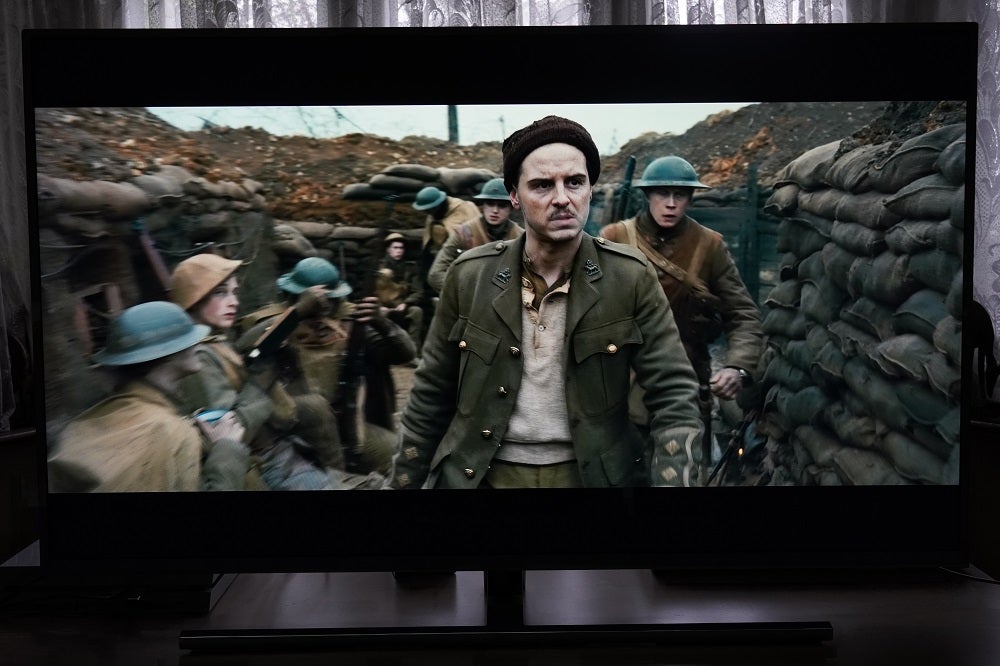
Black levels are strong (although that can vary with each picture mode), and fare even better in a lower light setting. Watching the crew of the Endurance in Interstellar (4K HDR) enter the wormhole, black/contrast levels in general were strong, making the Philips a decent shout for movie night.
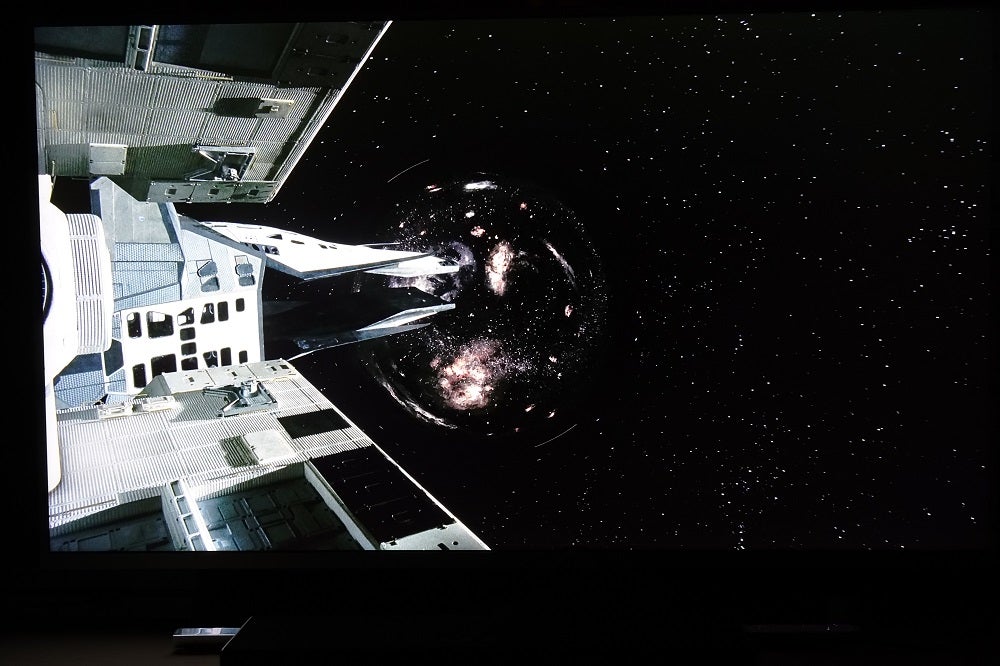
Colours lose a little lustre off-axis, as do black levels, and there’s some blooming; viewing head-on is best. Ambilight – here in its three-sided form – adds an enjoyable dimension, with a viewing experience that’s unique and immersive with its bias lighting.
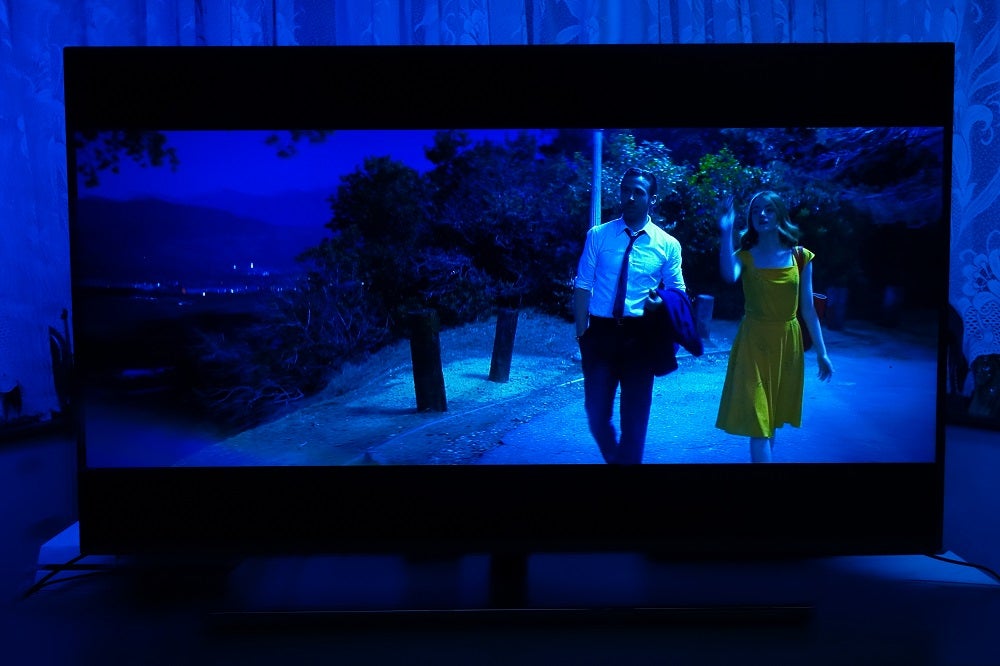
The display is powered by P5 Perfect Picture Engine that addresses the five pillars Philips feels are paramount to picture quality – source perfection, sharpness, colour, contrast and motion. It can also add further processing to HDR10 and HDR10+ sources. More on that a little later.
Like Philips’ OLEDs, the 50PUS8545 has the main HDR formats in its bag of tricks in HDR10, HLG as well as the premium HDR10+ and Dolby Vision formats. HDR performance can be very good with the right mode engaged. With HLG on iPlayer it shows off bright and colourful images in His Dark Materials series two.
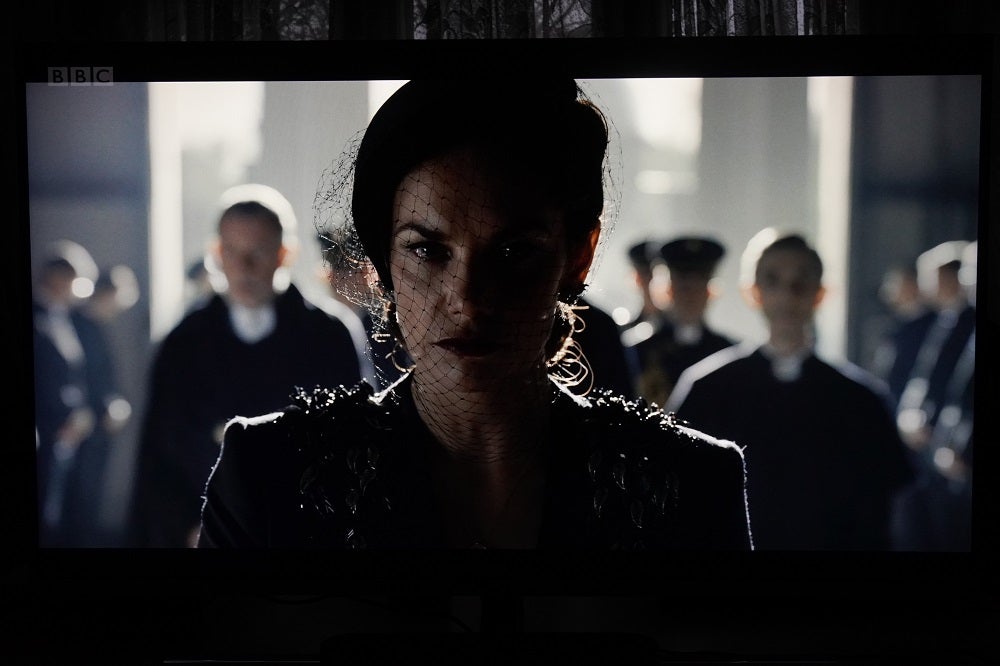
However, the 50PUS8545 has a habit of emphasising blues with a teal-like quality in Dolby Vision playback. That may be accurate for series 3 of Star Trek: Discovery on Netflix, though I’m less certain that’s the case for Spider-Man: Far From Home and Bumblebee. That aside, Dolby Vision shows the TV at its best in terms of colour, sharpness, detail and black levels.
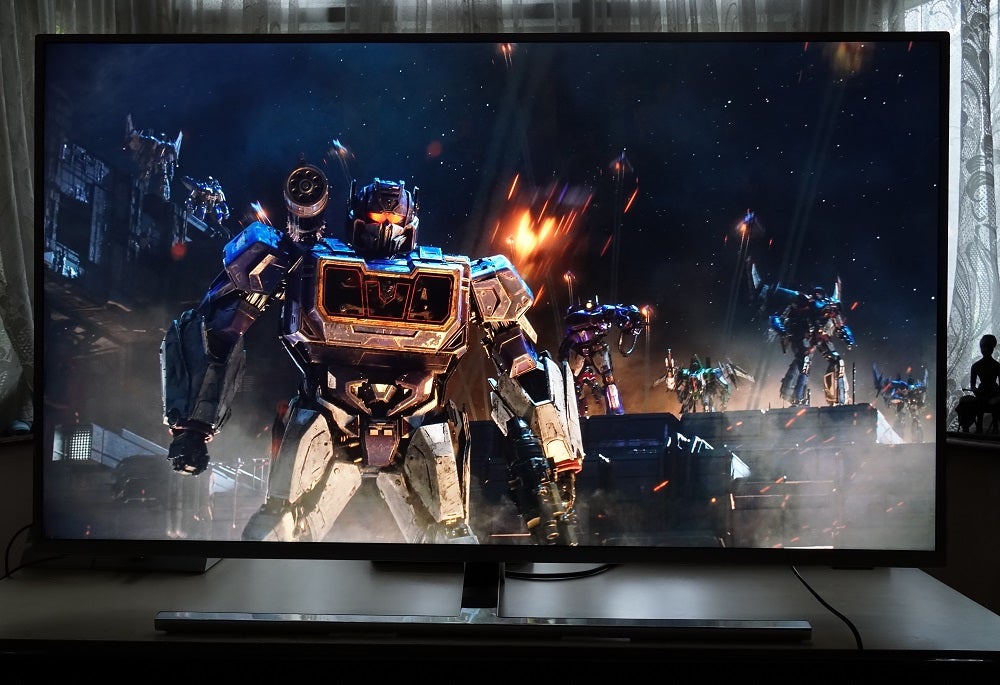
The HDR10+ performance, on the other hand, appears to suffer from aggressive processing. Watching Alien, Bad Times at the El Royale and Widows in 4K HDR10+, and black levels were overwhelmingly strong in places. The HDR10+ presentation of Alien looks like someone turned the lights off.
HDR10 HDR10+

When it comes to standard HDR performance with 4K Blu-rays, the TV’s HDR Vivid mode is often more enjoyable than the TV’s HDR Movie mode. While Movie is more accurate, depending on the film it can look dull and boring. With Vivid mode there’s obviously more vibrancy (those teal blues are back again), but black levels are slicker, there’s more perceptible detail, and the image is sharper (although that could use dialling down). If you want a more “correct” performance, try the ISF Day/Night modes. The colours of Captain Marvel (4K HDR10) look great in the Vivid preset.
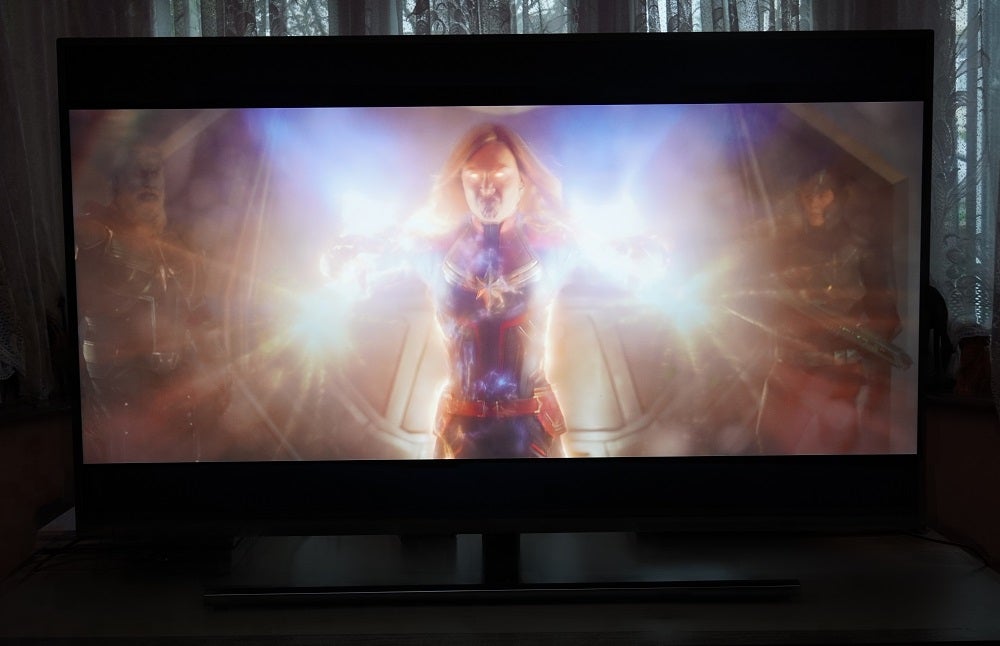
MOVIE HDR VIDID HDR


Sound quality
- Flat presentation
- Struggles with action scenes
In the sound department the Philips 50PUS8545 features Dolby Atmos compatibility, though it’s not the immersive version but improved audio processing. You also get DTS Play-Fi, useful if you have other compatible Play-Fi products for connecting the TV to speakers to create a multi-room audio setup.
In terms of performance, the 50PUS8545 2 x 10W downward-firing speakers produce a sound that’s decently big and can go fairly loud – at least in Movie mode. However, it never escapes the confines of its flat presentation. While there’s clarity to voices with daytime TV and sports, bass is (obviously) limited, and the set can struggle when faced with a lot of action. With Atmos there’s further refinement and a more spacious quality, but you’ll want to pair the Philips 50PUS8545 with a soundbar.
Do bear in mind that if you hook a soundbar over optical, go into the settings and turn TV speakers to Off. Otherwise, the TV won’t pass sound properly to the soundbar.
Latest deals
Should you buy it?
You want a jack of all trades TV The Philips 50PUS8545 is a tricky TV to summarise. It has its strong points, but there’s also a quirkiness to its performance too. Is it “The One” to watch? Well, it’s ambitious – perhaps overly so – but it will appeal to those looking for a little bit of everything in one TV.
You want more accomplished performance Competition comes from the Samsung TU8500. It has fewer HDMI inputs (but does have eARC) and doesn’t support either Dolby Vision or Atmos, but it’s arguably the more accomplished of the two, in particular with regards to upscaling and gaming. There’s also the Panasonic HX600. That can do Dolby Vision/Atmos and requires less fiddling with the picture settings, but lacks the varied feature set of the Philips or the wide video app support.
Final Thoughts
The Philips’ 50PUS8545 is a mid-range 4K TV with an impressive spec sheet on paper. It can present colourful images, although its out-of-the-box settings require adjustment. Ambilight is a treat, but its HDR10+ performance is peculiar, and the native Disney+ and Prime Video apps don’t support HDR.








